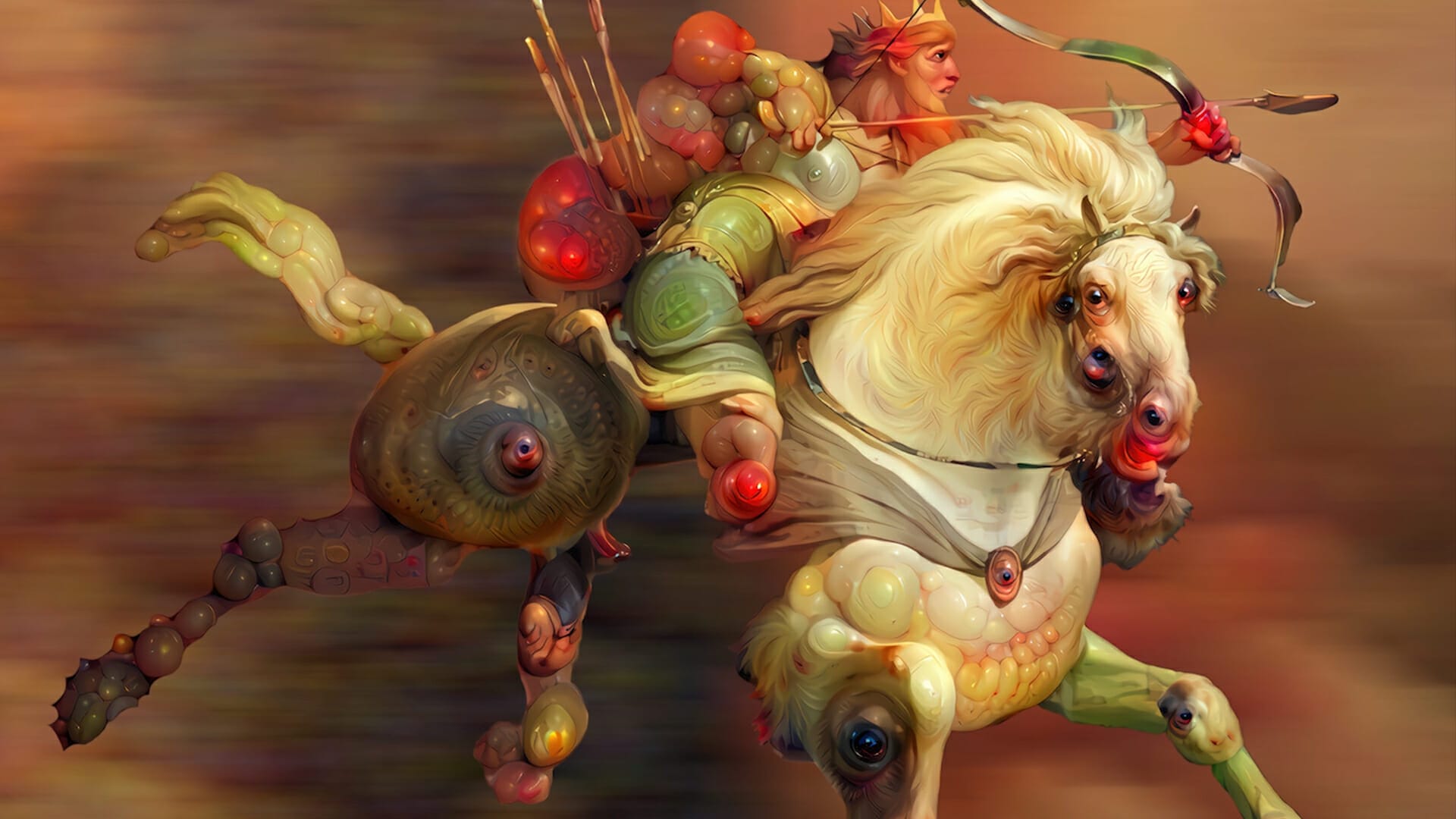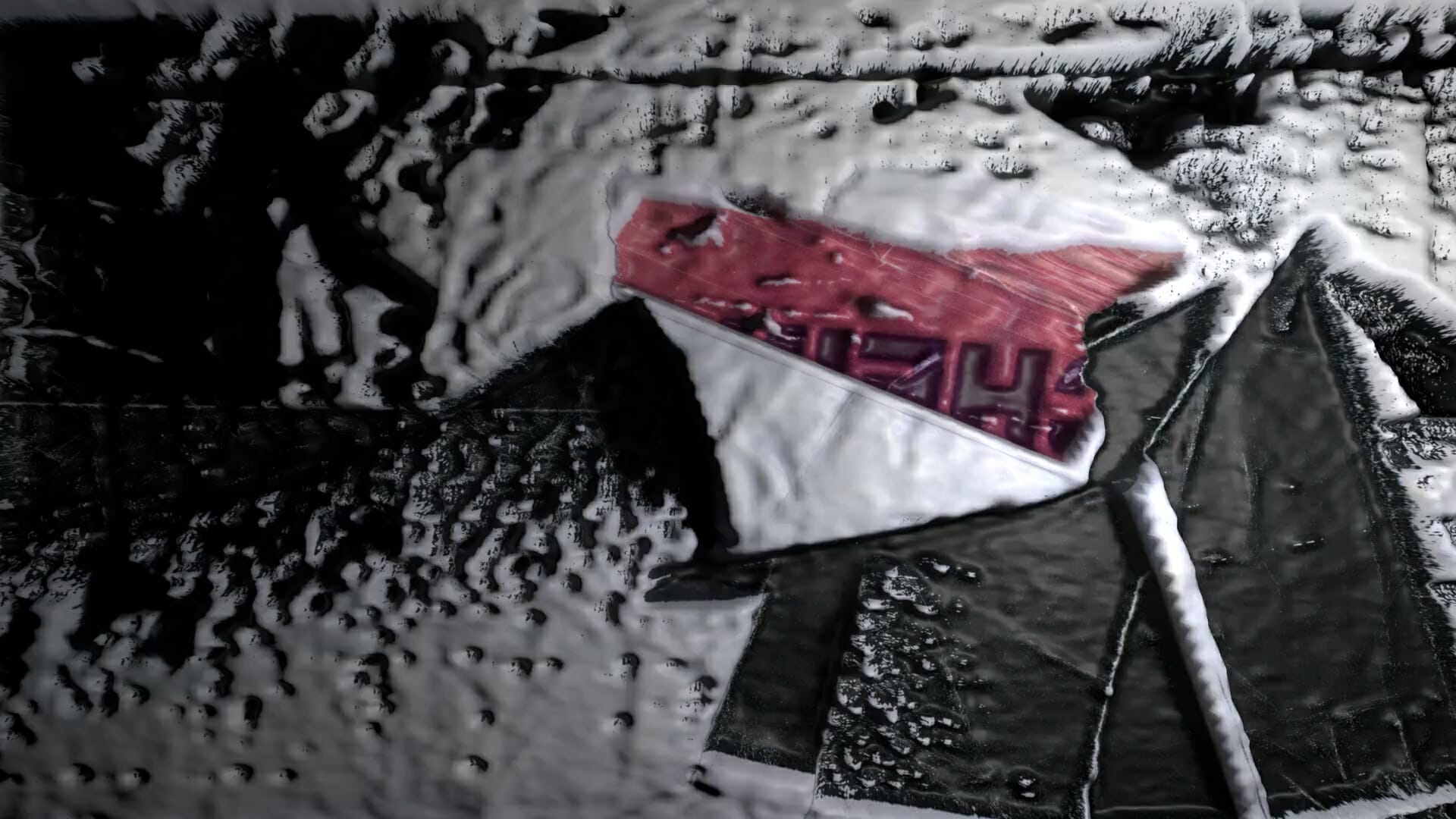
Pablo Rodriguez-Fraile in Conversation with Fakewhale
Co-founder of the RFC Art Collection, Pablo Rodriguez-Fraile, alongside his wife Desiree Casoni, is at the forefront of the evolving art landscape, blending the traditional with the transformative power of digital art.
With a strong foundation in mathematics and as an early adopter of blockchain technology, Pablo has strategically positioned himself as a pivotal figure in the art world, collecting over 2,000 artworks. In the following conversation, we explore Pablo’s journey from the financial sector to the forefront of digital art, discussing how his initiatives are not just reshaping art collecting, but also influencing broader cultural conversations, bridging digital innovations with traditional art appreciation.

Fakewhale: Pablo, could you share some insights into your early life and what initially drew you to the worlds of mathematics, economics, and ultimately digital art? How have these fields shaped your approach to collecting art?
Pablo Fraile: I’ll focus on how the art side connects. Like many people around the world, some are drawn to numbers, and others to words. I’m a structured, numbers person, and I had a strong affinity for mathematics from an early age.
Parallel to that, my family, while not collectors, were strong appreciators of the arts and culture. My father was more focused on architecture, and my mother on art and culture in general. Our home was architecturally forward-thinking and always filled with beauty, art, and culture—a rich environment to grow up in.
People often separate the domains of numbers and art, but I think they share certain components. This became important to me when I met my wife in college. Aside from having fun and partying like every other college student, many of our activities were culturally based—visiting galleries, museums, and cultural sites. The first gift I ever gave my wife was a work of art by Guillermo Mora, a Spanish artist we both admire, and we still have it in our collection.
Fast-forwarding a bit, I started my career in finance but soon found my way to blockchain. I was an early adopter and quickly realized the potential of the NFT ecosystem from its inception. This allowed me to merge my professional knowledge of blockchain with my personal passion for art and culture. It was a very organic process, and we participated just for fun, enjoying it and recognizing something special.
My wife has been a major influence throughout this journey. She’s an architect and designer and also engages in photography and painting. Though she doesn’t practice the latter two professionally, her artistic vision profoundly influences all our activities. She’s extraordinarily talented and has been a significant part of this journey, and we just have a lot of fun through the process.
Fakewhale: You were truly one of the first to make a significant impact in digital art. Yet, even in your early involvement, you have pushed for a maturation of the space with projects aimed at a broader concept of art, not just NFTs such as with Studio Drift. How do you foresee the evolution of the interaction between digital innovation and artistic creation, and what role do you see for thoughtful curation within this expanding framework?
Pablo Fraile: Yes, and here I want to be very careful with my words because I really don’t want to put art in a box, like saying art needs to be like this. I am nobody to define where art can or should be. Art can be anything. However, there are two general ideas that I think are important to note about this environment in particular. One has to do with the collector side—it’s heavily influenced by a speculative audience, often coming from blockchain trading, realizing that these artworks can, in some ways, be financial assets tied to a JPEG or to a work of art. This happens across all domains, but here it’s more pronounced, and not always in a positive way.
Secondly, I’m very libertarian in this thought, but I believe that people should be able to do whatever they please, as long as they’re not negatively impacting others. That said, I do think that if someone wants to approach art professionally and do it well, there are certain steps to follow. There isn’t just one path, but there are clear traits associated with greatness across any domain.
Art is peculiar for many reasons, but for artists who are pursuing it professionally and making a living from it, there are nuances, it’s a job and a profession like any other. I think it makes sense for artists to think more deeply about structure, the future, and how they present themselves to the world. Early on, there was little infrastructure for artists to maintain continuity, release works deliberately, and mature professionally. It was very fresh and broke many barriers, allowing a lot of creatives to participate. But if you want to be the best and take it seriously, there was a lack of thoughtfulness in the approach.
As for the future, I really don’t want to put art in a box. But in my personal experience, and as someone who has advocated for digital for almost a decade, I’ve realized that while digital art is revolutionary and opens barriers to entry, there’s nothing more powerful than a shared human experience. I’m a big proponent of bringing digital ideas into the physical world in ways that people can live through.
We’re seeing that audiences and society are clearly asking for these types of experiences. Look at MoMA, for example; what artists like Refik Anadol and others are doing. It’s always full, always well-reviewed, always engaging. We need more of these instances, and I think the space is naturally moving in that direction.
Lastly, we need to differentiate NFTs from everything else. NFTs are just a technology that digital art uses for accountability. There are small cases of blockchain-related art, but for the general conversation, it’s best to separate the two.

Fakewhale: In the past you’ve expressed concerns about the commoditization of NFTs and the importance of distinguishing authentic artistic work from mere digital assets. Could you elaborate on how you assess the artistic integrity of an artwork, and what criteria you consider most critical?
Pablo Fraile: As I mentioned earlier, I’m not here to define what art should be. But with my wife, we do have certain traits we look for when considering an artist. We rarely, if ever, buy a single work from an artist. In the past, we did that more, but now we prefer to see multiple aspects of the artist’s body of work. We try to support them comprehensively—not just by acquiring pieces but also by helping them connect with institutions, collectors, and offering advice when needed.
When it comes to the traits we value, first and foremost, I believe that a good artist not only has great ideas but also knows how to execute them properly. You need to master the tools you use to convey your ideas. I’m a big fan of excellent execution. Whichever medium you choose, you need to be the best at that form of creation.
We also like to see continuity and evolution in an artist’s work. Artists go through different periods, and that’s okay, but we appreciate seeing a clear narrative or evolution over time. Personally, I like when I can mostly tell that a work is from a particular artist without losing that sense of evolution.
We’ve always advocated for building relationships with the artists we support. Desi and I believe personality is very important, especially in today’s world where people want to work with those they connect with. The time of bad personalities being successful in the creative world is over. And, of course, I value structure and discipline. We like artists who are committed and moving forward, and from there, the sky’s the limit.
Many of the works in our collection are nature-based in some way. For example, we have a piece by Sofia Crespo—her work is AI-driven, but it’s inspired by biological forms.
Fakewhale: Beautiful piece. I also really love the one behind you!
Pablo Fraile: Yeah, that’s Andrés Reisinger. He’s amazing. I’ve been supporting him for a long time. This is part of the “Takeover” series, which is absolutely fascinating. Essentially, he dresses up buildings in different places around the world. This particular one is set in the Alps, but he’s done cities like Miami, New York, Madrid, and Jeddah. There’s always a physical manifestation of the work, like when we did a major activation in Madrid during ARCO. Andrés took over a big building, and I was involved, but he led the project. There’s always the physical piece, and then a series of associated artworks inspired by the city.
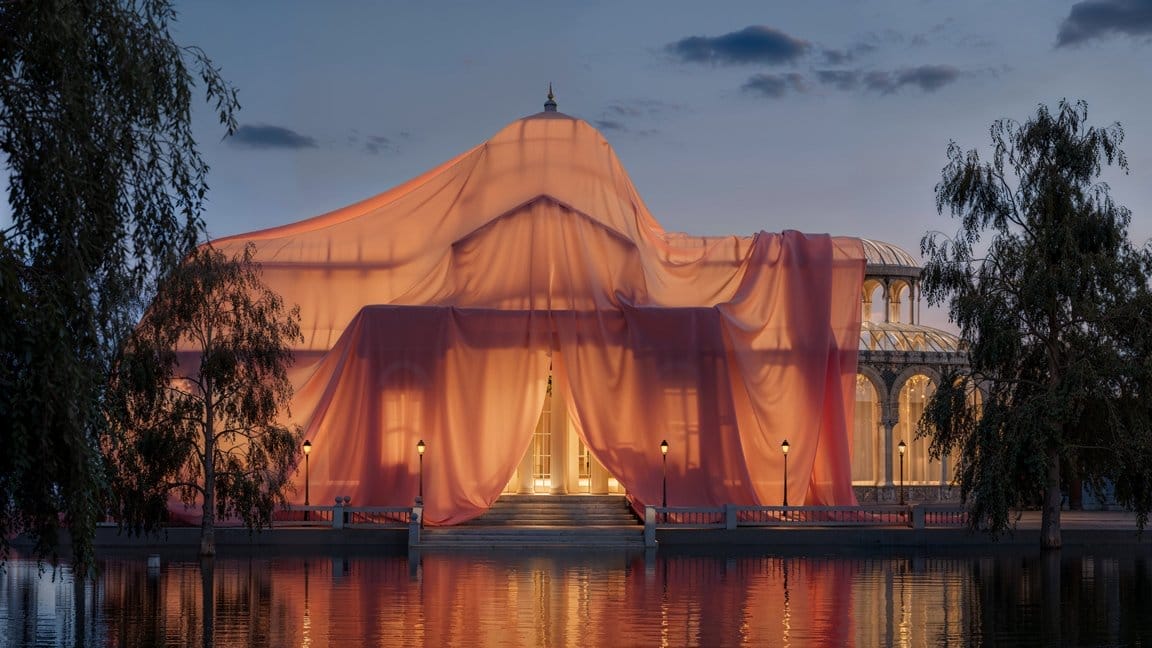
Fakewhale: You touched on this earlier as we were talking about the relationship between collectors and digital artists in this space, but let’s go deeper. The relationship between collectors and digital artists in this space is known for being direct and interactive. How has this shaped your approach to building your collection, and what impact do you believe this has on the artists’ artistic development?
Pablo Fraile: I’m happy to dive into this. We’re in the digital age where many artists are engaged, active, traveling, and highly visible online. They’re very approachable. I’m a big advocate of structure, and I encourage all the artists I work with to form partnerships with a gallery or someone who can represent them for the long term. Long-term thinking and investing in relationships are crucial.
That said, we’re living in an era where artists need to engage with their audience and still have structure. Thankfully, we’re starting to see artists understand that they can maintain direct relationships with their collectors while also having the necessary structure to succeed.
Fakewhale: Your RFC Art Collection has really pushed the boundaries of what digital art can accomplish, bringing together artists, institutions, and industry leaders. Can you share how your approach, such as mixing different disciplines and focusing on themes like social reflection, has shaped the way you curate your collection? How do you think these efforts are helping to create a new artistic ecosystem for the future?
Pablo Fraile: Yes, I touched on this earlier. Our collection is highly eclectic, and we’re having fun through the process. Desi has done an incredible job setting up our home to properly showcase the art. We host over a hundred people a month, either for events or personal invitations, and digital art is always engaging. Even now, as we’re speaking, the presence of digital art in this conversation is powerful, even though we’re not physically together.
We’ll keep doing this, and we need to see more institutional and public spaces embracing digital art. I love what you’re doing—we need to normalize digital art. It shouldn’t need to be distinguished as “digital” unless relevant in the conversation. It’s art, and we need more institutions supporting it. Foundations have played a key role in contemporary art in the U.S., and we need a major foundation to support digital art as well.
The barriers are breaking, and I’m happy with where we are. Five years ago, I wouldn’t have imagined us being here. What happened at MoMA was incredible—almost 3 million people saw the exhibition live, bringing in a completely different audience. But we need more initiatives from institutions, private groups, and others to continue pushing forward.
We also need better infrastructure—more galleries, more participants, and more physicality. I know it sounds contradictory, but we need digital art to have a physical presence too. That’s where Desi and I are focusing for the future, bringing these experiences into the physical world. We’ve done projects with Studio Drift, Rafael Rozendaal, Andrés Reisinger, and Davide Quayola, just to name a few.
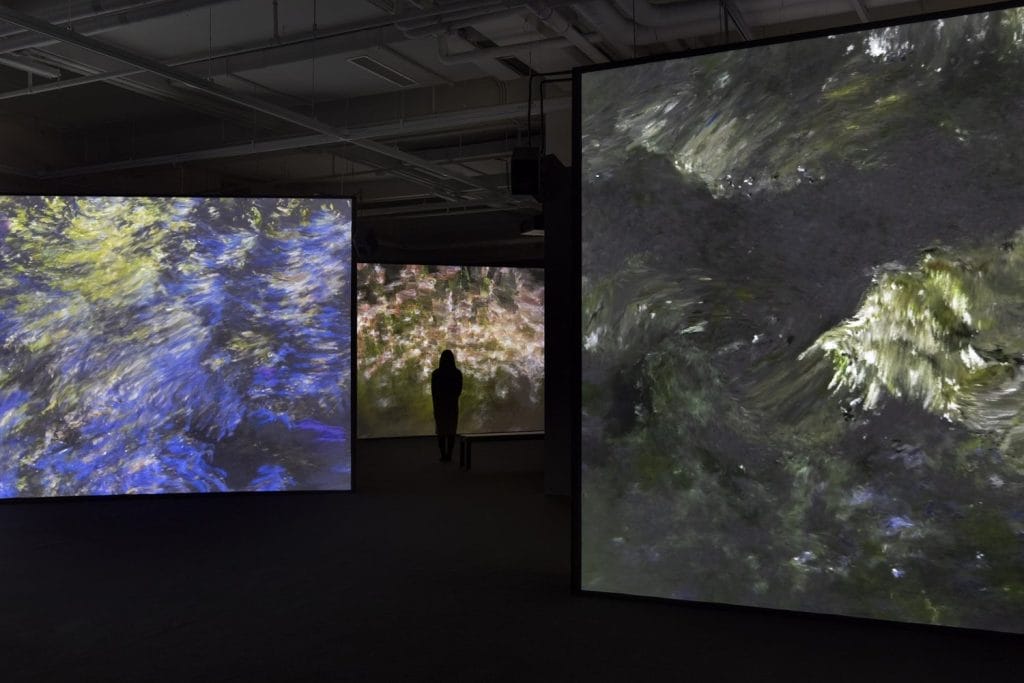
Fakewhale: What advice would you offer to someone looking to start collecting digital art today?
Pablo Fraile: There’s no substitute for being there and participating—just getting involved. It’s a welcoming space, so come in, ask questions, and enjoy the process. Particularly if you’re new, it’s not just about buying, but connecting with different artists and finding what resonates with you.
There are so many amazing artists out there. It’s no secret that I support Andrés Reisinger and others like Quayola. They exhibit a level of professionalism and artistic output that’s hard to match. Anna Ridler, with her conceptual use of AI, is also extraordinary. And of course, I’ve had a soft spot for Sofia Crespo for a long time. Her work, though digital and AI-driven, is research-based, biological, and relatable.
I also appreciate artists like Skygolpe, who bring digital concepts that tell a story and build a narrative. One of the things I really like is an artist having a recognizable identity. When you see something by Skygolpe, you know it’s his. Ry David Bradley is another favorite—he’s always felt like a true artist to me.
There are many more. Lately, I’ve been really appreciating artists like Operator, who are bringing interesting concepts to the space, and Botto, which explores whether an AI artist is really an artist. That’s a huge debate, but Botto, spearheaded by Mario Klingemann, is technically advanced and challenges some of our notions about AI and creativity.
Fakewhale: As we look ahead, what are your aspirations for the RFC Art Collection, and how do you envision its impact not only on the digital art landscape but also on broader cultural and social discourse in the coming years?
Pablo Fraile: Through the activities we’ve participated in over the past few years, we’ve realized that most people love culture and art. The traditional, physical, and analog contemporary world can be exclusive. If you’re not knowledgeable, the first time you go to a gallery, auction house, or museum, there’s often a barrier.
We believe art helps break these barriers. It’s very welcoming to many people. We want to champion this idea and bring art and culture to everyone. This is particularly great for the younger generation—digital art is dynamic and opens up opportunities for kids. I’m a big fan of education, and we want to continue on this path.
We’ll keep trying to be a liaison with institutions, being public about our collection, donating, loaning, and supporting the arts. We want to break down the barriers sometimes associated with this ecosystem. That’s part of our plan, and I’m starting to structure some ideas around the foundation concept we discussed earlier. Ultimately, we’re enjoying the process, and it’s a blessing to do something we find so beautiful.
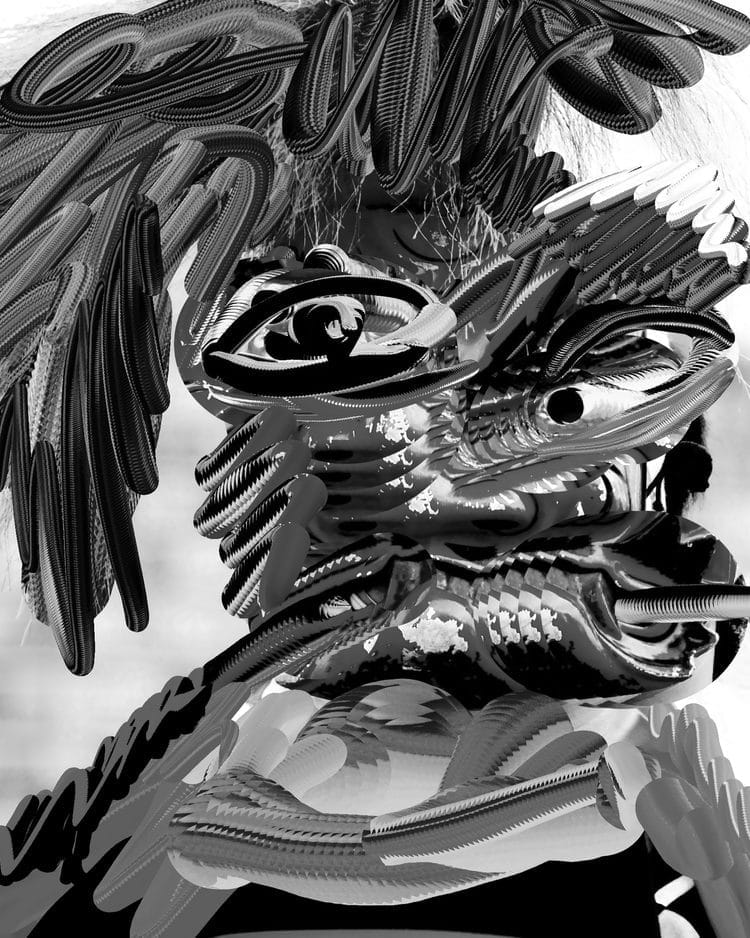
fakewhale
Founded in 2021, Fakewhale advocates the digital art market's evolution. Viewing NFT technology as a container for art, and leveraging the expansive scope of digital culture, Fakewhale strives to shape a new ecosystem in which art and technology become the starting point, rather than the final destination.
You may also like
Von Doyle: Mad Scientist in the Digital Canvas
“Disturbing the old masters with AI”, Von Doyle is a digital artist who creates psychedelic pi
Mattia Cuttini : A Curious Observer at the Intersection of Design and Blockchain
“Since 1979, I observe the world with curiosity” This is the philosophy of Mattia Cutti
Donghoon Gang, attacca, at BOAN 1942, Seoul
“attacca” by Donghoon Gang, at BOAN 1942, Seoul, 26/07/2024 – 10/08/2024. The Dyad



